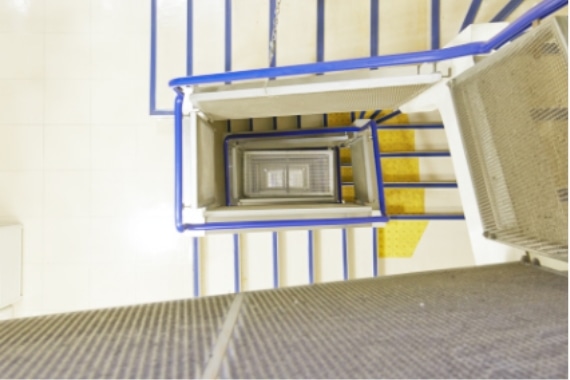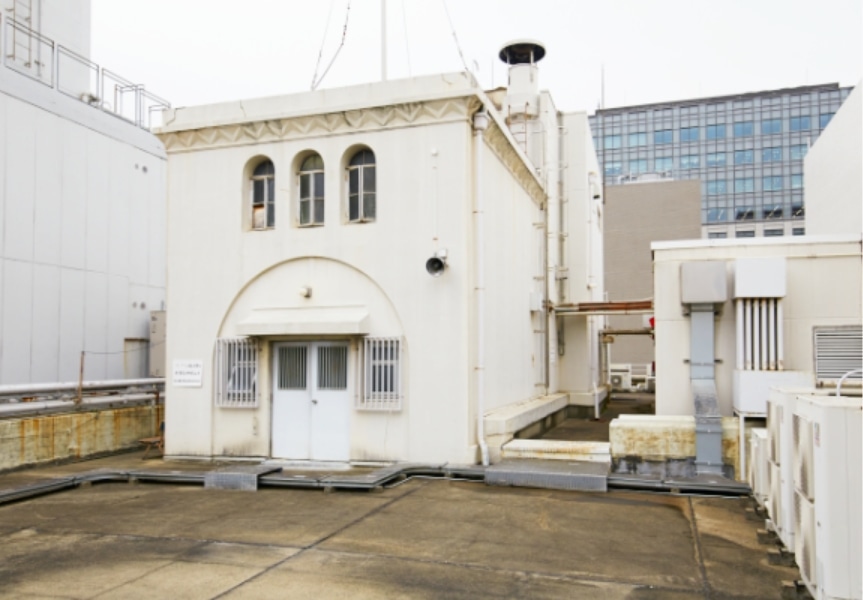
South side
Old outer wall window near the backyard stairs on the 4th floo
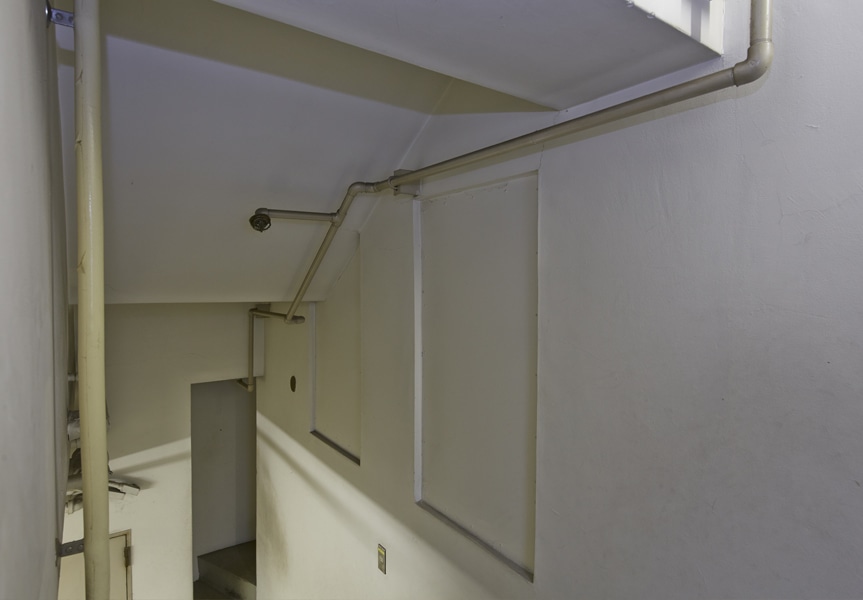
The south side of the building was added after the building was first finished.
The window which was set on the original outer wall on the south side when the building was first completed is buried under an iron plate, and the outer part was also flattened with concrete.
Fan-shaped stairs in the sales area on the 1st floor

From the floor on the 1st floor to the 3rd step, the nosing portions are curvy. In addition, the curvature of each nosing is different. This is a result of prioritizing design over the ease of going up and down.
Because these are the stairs which customers use, they set up the steps whose curvatures are different to attract attention, I suppose.
As a matter of fact, for commercial buildings constructed before the war, presentation of space was given a bigger priority than convenience and space efficiency.
The old main store of Hankyu Department Store in Umeda, Daimaru Department Store in Shinsaibashi and Takashimaya Department Store are the good examples. It is possible to assume that they aimed to enhance the customers‘ desire to buy by having them see the irregular stairs to uplift their feelings. You can find such a strategy in many department stores and much commercial architecture right before and after the war.
When it comes to modern architecture, I am pretty sure that practicality and convenience take precedence and stairs whose curvatures are uniform and simple are installed.
Processing of the curve at the corner at the lower step of the stair landing

Regarding the corner portions of the area which customers go through, the edges of the wall surface and wainscot are rounded so that they do not get injured in case they run into them.
Especially for the wainscot, artificial marble (terrazzo plate) is put on, but even the wainscot part is shaved deliberately so that all the edges become round.
Hexagonal pillar at the lower step and the landing on the 1st floor

This is the only hexagonal pillar. It is aesthetically beautiful, but it also seems that this is out of consideration to make the corners as smooth as possible to prevent customers from getting hurt even if they bumped into them.
Look up from the lower step and the landing on the 1st floor
You can see tsunogara, which is a decoration where two woods are combined and one of them is stretching out, under the bulletin board on the right side as well as cornices around the borders between the ceiling and wall.
Plasterwork on the ceiling around the lower step and the landing on the 1st floor
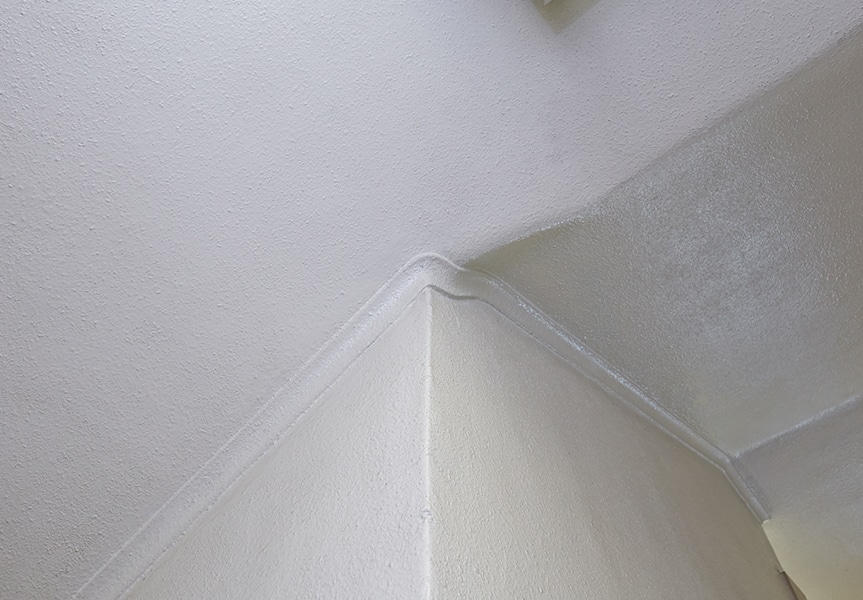
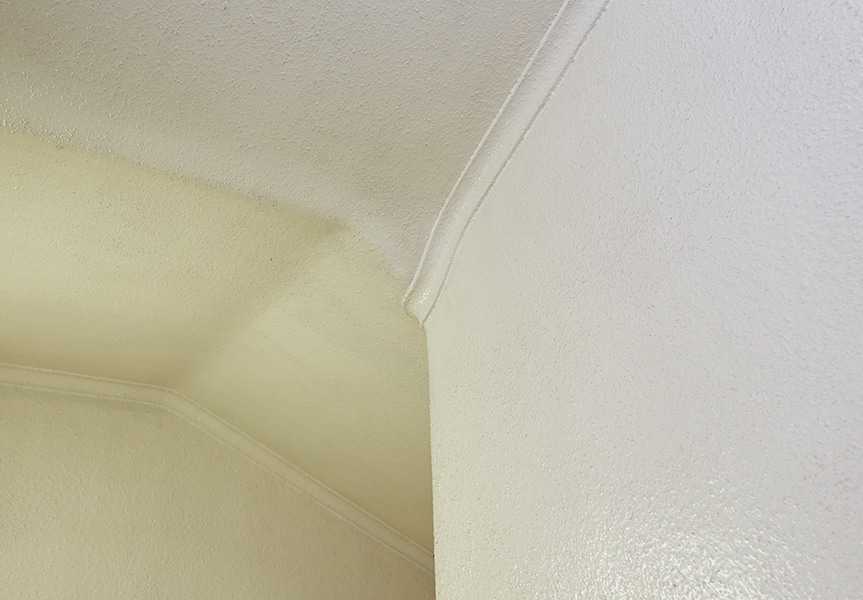
Borders between walls and ceilings are the parts where gaps and cracks tend to form. In order to hide those parts and keep them looking beautiful, ‘cornices’ are applied. In this building, cornices are installed around the borders between the ceilings and the walls as well.
Those fine curves of the cornices produced by the handwork of plasterers tell how high the quality of their techniques was.
Lower steps and landing on the 2bd floor

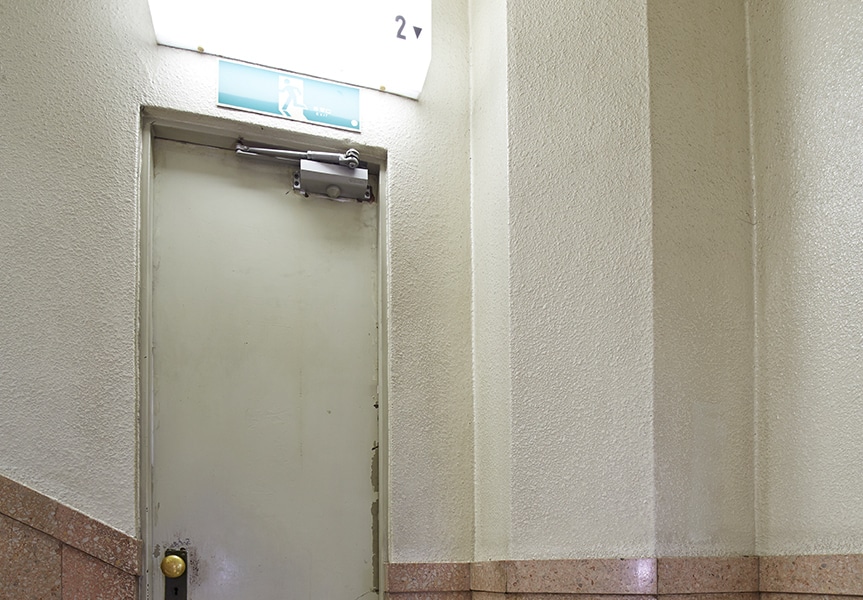
The door to the emergency stairs is narrow and is from the time when the building was constructed. Back then, the door was leading outside, and iron stairs were set there as emergency stairs.
Artificial marble of the wainscots on the 1st, 2nd and 4th floors
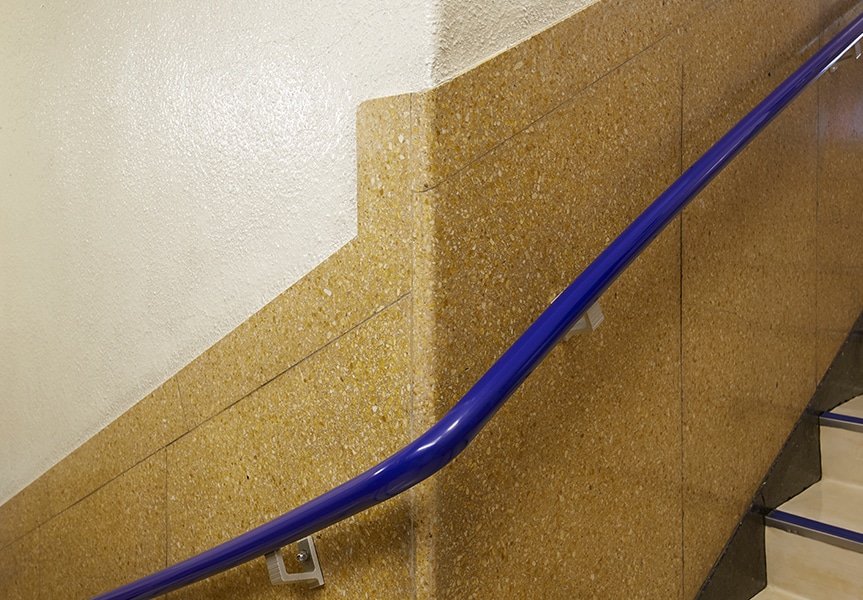
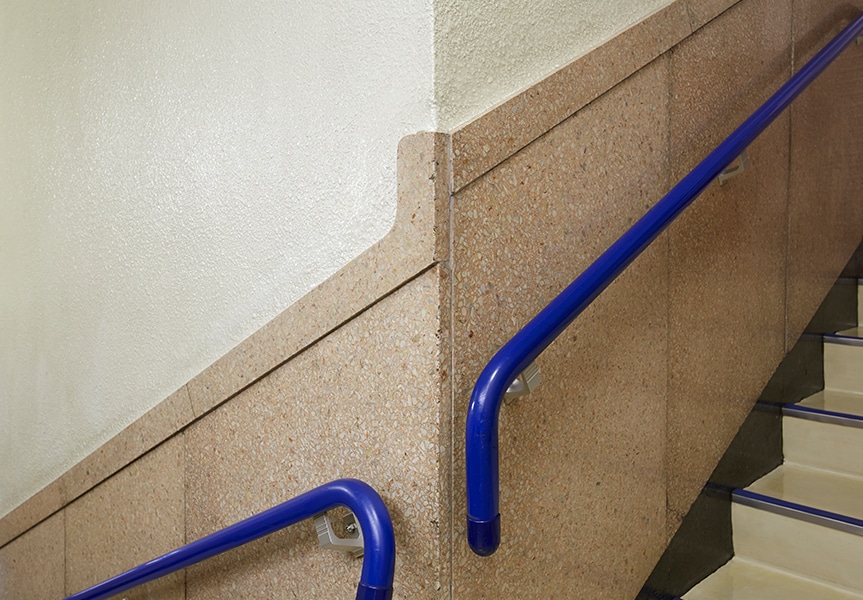
Regarding the artificial marble of the wainscots, the color of the stone from the 1st floor to 2nd is different from the one from the 2nd to 3rd. On the other hand, for the 4th floor and above, which were used as offices right after being constructed, wainscots of artificial marble are not used. As the colors are not completely different from each other and are both warm colors, the intention was not only to show which floor people are on but also to present a fashionable feeling.
Of course, the corners of wainscots are rounded off, which shows consideration of the customers’ safety.
Outer wall


On the handrail part of the rooftop, which is called a parapet, especially around the corner part, they put decorations which are uneven like a bellow and sticking out more and more as they go higher. At the eaves part, a three-dimensional belt-like decoration called eaves molding is installed.
You can find eaves moldings which stick out more and more as they get higher in historical architecture in Europe. In this building, the eaves molding consists of 3 steps, and 7 ribs are horizontally put on. This shows the influence of an architectural style called German Expressionism.
Under that, the same decoration as the parapet on the rooftop can be seen, and underneath it is an arch. This type of arches are often found in Romanesque style buildings, and they are called Lombard bands. As the decorations are perfectly done in every detail, you must feel the commitment of the architect, Mr. Akinori Okabe to the building.
In Japan when it was built, German Expressionist-ish design and Romanesque style architecture were in fashion. For reinforced concrete buildings constructed from late Taisho (1912-1926) to early Showa period (1926-1989), it is not an overstatement to say that decorations like this were always used. This had to be one of the refined and stylish buildings back then.

